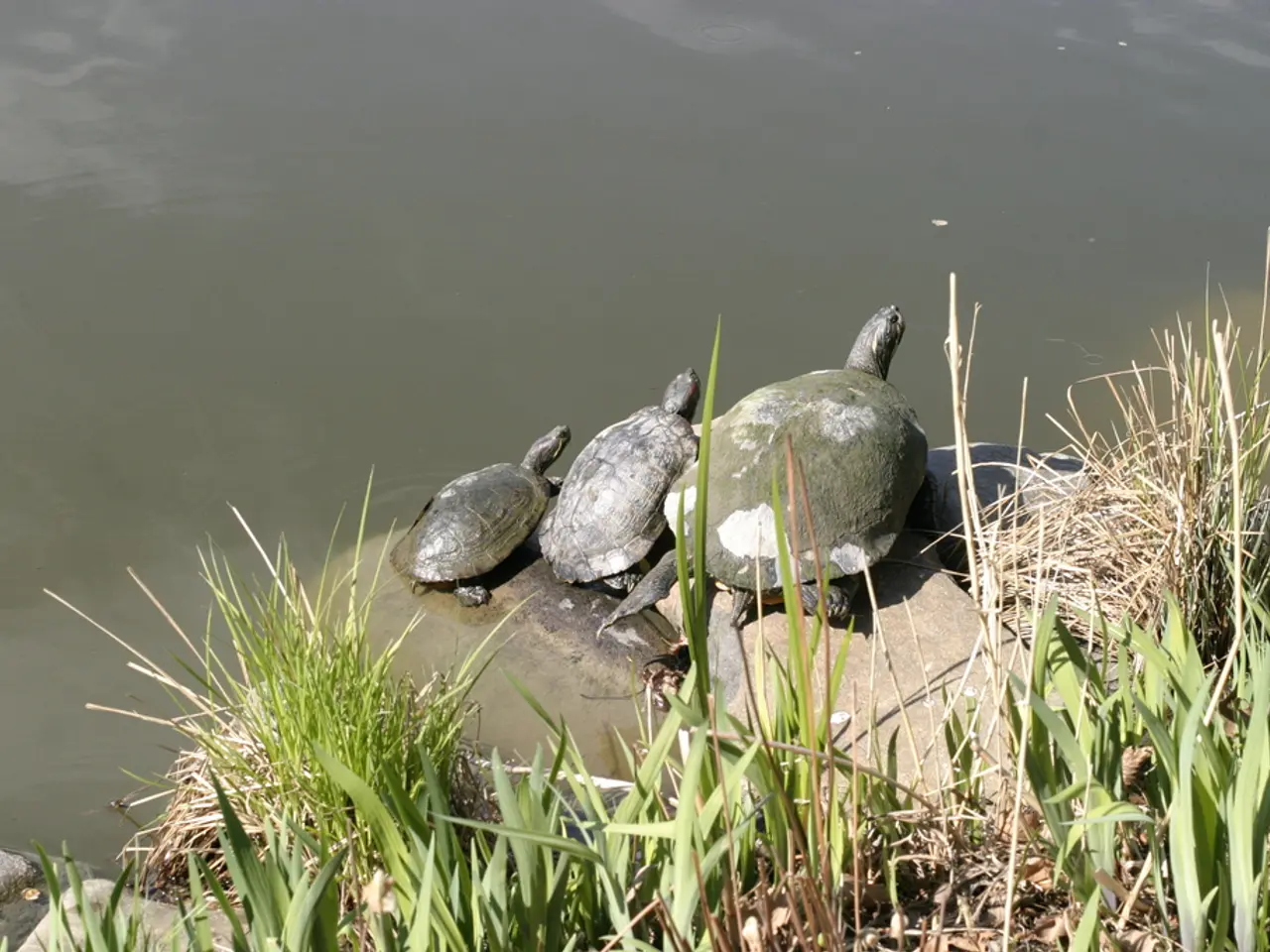Basil Plants Drowning or Starving: Spotting and Resolving Watering Problems
Basil is a beloved herb in many kitchens, but it can be challenging to cultivate due to its specific water requirements. To grow thriving basil, it's essential to understand the signs of both overwatering and underwatering, and to maintain the right balance of soil moisture.
Signs of Overwatered Basil Plants
Overwatered basil plants may show signs of yellowing leaves, especially at the base, wilting despite moist soil, mushy or blackened stems near the soil line, soft, rotten roots, and constantly wet soil. Other symptoms include light green or yellow new growth, leaf curl and leaf drop, mold or mildew on the soil surface or plant stems, and a foul smell from the soil.
To prevent overwatering, use well-draining soil and pots with drainage holes. Water basil deeply but infrequently, providing about 1½ inches of water per week, adjusting based on rainfall and environmental conditions. Check the soil moisture regularly, as basil prefers consistently moist but well-draining soil. Avoid watering the foliage to reduce disease risk; water directly at the roots. Monitor for signs of overwatering and adjust watering accordingly.
Signs of Underwatered Basil Plants
Underwatered basil plants may wilt or appear limp with dry, crisp stems, have brown or crispy leaf edges, show stunted or slowed growth, and have dry soil pulling away from the pot edges. Brittle leaves may drop off, and the soil surface may appear dry and dusty.
To ensure optimal soil moisture, water basil when the top inch of soil is dry. For container basil, water more often as these dry out faster. The finger-test method, sticking a finger an inch deep into the soil, can determine the soil's moisture level. A soil moisture meter can provide precise readings of the soil's moisture level.
Balancing Soil Moisture for Thriving Basil
By following these watering tips, basil will grow healthy, with ample leaf production and minimal disease or stress due to improper moisture. Pruning damaged leaves can encourage new growth in overwatered basil plants. In severe cases of overwatering, checking for rotting roots and repotting in fresh soil can help revive the plant.
Glen, a gardening expert with over 15 years of experience in garden maintenance, design, and landscaping services, emphasises the importance of maintaining the right balance of soil moisture for thriving basil plants. Basil benefits from well-draining soil to prevent waterlogging and root rot. Drainage holes in pots are important for preventing water from pooling at the bottom and making the roots unhappy.
[1] Gardening Know How [2] The Spruce Eats [3] Garden Myths [4] Garden Design [5] HGTV
- Glen, with his extensive gardening expertise, highlights the significance of maintaining the right balance of soil moisture for thriving basil plants, especially when it comes to home-and-garden activities like gardening.
- To grow basil that thrives in one's home-and-garden, it's crucial to understand the signs of both overwatering and underwatering, and to balance the soil moisture carefully, as seen in both lifestyle choices and gardening practices.




